Side Effects of Stye: Understanding Symptoms and Treatment Options
What are the common side effects of a stye. How can you effectively manage stye symptoms. What treatment options are available for styes. When should you seek medical attention for a stye.
What is a Stye and How Does it Affect the Eye?
A stye, also known as a hordeolum, is a common eye condition characterized by a painful, red bump that forms on the eyelid. It occurs when an oil gland or hair follicle near the eyelash becomes infected or clogged. Styes can develop on either the upper or lower eyelid and may affect one or both eyes simultaneously.
Styes are typically caused by bacteria, particularly Staphylococcus aureus, which naturally reside on the skin. When these bacteria enter the oil glands or hair follicles, they can trigger an infection, leading to the formation of a stye.
Types of Styes
- External stye: Occurs on the outer edge of the eyelid
- Internal stye: Develops inside the eyelid
While styes are generally harmless and often resolve on their own within a week or two, they can cause discomfort and affect daily activities. Understanding the symptoms and available treatment options is crucial for managing this condition effectively.

Common Symptoms Associated with Styes
Recognizing the symptoms of a stye is essential for early detection and proper management. The most common signs and symptoms include:
- A red, swollen bump on the eyelid
- Tenderness and pain in the affected area
- Eyelid swelling
- Watery eyes
- Light sensitivity
- A gritty sensation in the eye
- Crusting along the eyelid margin
In some cases, individuals may experience more severe symptoms, such as:
- Blurred vision
- Difficulty opening the eye
- Discharge from the eye
- Fever (in rare cases)
Is it possible for a stye to cause vision problems? While uncommon, a stye can temporarily affect vision if it becomes large enough to press against the eyeball or distort the shape of the cornea. However, this is typically a temporary issue that resolves as the stye heals.
Treatment Options for Managing Stye Symptoms
Most styes resolve on their own within 1-2 weeks. However, there are several treatment options available to alleviate symptoms and promote faster healing:

1. Warm Compresses
Applying a warm compress to the affected eye is often the first line of treatment for a stye. This simple remedy can help:
- Reduce pain and swelling
- Promote drainage of the infected gland
- Increase blood circulation to the area, aiding in healing
To use a warm compress, soak a clean cloth in warm water, wring out excess moisture, and gently place it over the affected eye for 10-15 minutes, 3-4 times a day.
2. Gentle Cleaning
Keeping the eyelid clean is crucial for preventing further infection and promoting healing. Use a mild, tear-free baby shampoo diluted with warm water to gently clean the eyelid twice daily. Be sure to rinse thoroughly and pat dry with a clean towel.
3. Over-the-Counter Medications
Several OTC products can help manage stye symptoms:
- Lubricating eye drops to relieve dryness and irritation
- Antibiotic ointments to prevent secondary infections
- Pain relievers such as ibuprofen or acetaminophen to reduce discomfort
4. Prescription Treatments
In more severe cases or when a stye doesn’t respond to home remedies, a healthcare provider may prescribe:

- Oral antibiotics to combat the bacterial infection
- Topical antibiotic ointments or drops
- Steroid injections to reduce inflammation in persistent cases
5. Surgical Intervention
In rare cases where a stye persists or becomes excessively large, minor surgery may be necessary to drain the infected gland. This procedure is typically performed by an ophthalmologist and can provide rapid relief from symptoms.
Potential Side Effects of Stye Treatments
While most stye treatments are safe and effective, it’s important to be aware of potential side effects:
Lubricating Eye Drops
Common side effects of lubricating eye drops may include:
- Temporary blurred vision
- Mild burning or stinging sensation
- Eye irritation
These effects are typically short-lived and subside quickly. However, if they persist or worsen, it’s advisable to discontinue use and consult a healthcare provider.
Topical Antibiotic Ointments
When using antibiotic ointments, be aware of the following potential side effects:

- Temporary blurred vision
- Mild eye irritation
- Allergic reactions (rare)
If you experience signs of an allergic reaction, such as severe itching, swelling, or difficulty breathing, seek immediate medical attention.
Oral Antibiotics
Systemic antibiotics may cause various side effects, including:
- Gastrointestinal disturbances (nausea, diarrhea)
- Yeast infections
- Allergic reactions
Always follow your healthcare provider’s instructions and complete the full course of antibiotics as prescribed.
Preventing Styes and Reducing Recurrence
While it’s not always possible to prevent styes, certain measures can help reduce the risk of developing them or experiencing recurrences:
- Practice good hygiene: Wash your hands regularly, especially before touching your eyes or applying eye makeup.
- Remove eye makeup before bed: Never sleep with eye makeup on, as this can clog oil glands and hair follicles.
- Replace eye makeup regularly: Discard old or contaminated eye cosmetics to prevent bacterial growth.
- Clean eyelids daily: Use a gentle cleanser to remove debris and excess oil from your eyelids.
- Avoid sharing personal items: Don’t share towels, washcloths, or eye makeup with others to prevent the spread of bacteria.
- Manage underlying conditions: Treat conditions like blepharitis or rosacea, which can increase the risk of developing styes.
- Use clean contact lenses: If you wear contact lenses, follow proper hygiene and replacement schedules to reduce the risk of eye infections.
By incorporating these preventive measures into your daily routine, you can significantly reduce the likelihood of developing styes and maintain overall eye health.

When to Seek Medical Attention for a Stye
While most styes resolve on their own or with simple home remedies, there are instances where medical attention is necessary. Consult a healthcare provider if you experience any of the following:
- Severe pain or swelling that interferes with vision
- A stye that persists for more than two weeks despite home treatment
- Recurrent styes or multiple styes at once
- Spread of redness or swelling beyond the eyelid
- Fever or chills accompanying the stye
- Thick or persistent discharge from the eye
- Vision changes or difficulty seeing
These symptoms may indicate a more serious condition or complication that requires professional medical evaluation and treatment.
Complications and Related Eye Conditions
While styes are generally harmless, they can occasionally lead to complications or be confused with other eye conditions. It’s important to be aware of these potential issues:
Chalazion
A chalazion is a non-infectious, painless bump that forms when an oil gland in the eyelid becomes clogged. Unlike a stye, it typically develops further from the edge of the eyelid and may persist for longer periods. In some cases, a stye can evolve into a chalazion if not properly treated.

Cellulitis
In rare cases, the infection from a stye can spread to the surrounding tissue, leading to cellulitis. This is a more serious condition that requires prompt medical attention. Symptoms of cellulitis may include:
- Severe swelling and redness extending beyond the eyelid
- Fever and chills
- General malaise
Blepharitis
Blepharitis is a chronic inflammation of the eyelids that can increase the risk of developing styes. It’s characterized by redness, itching, and flaking of the eyelid skin. Managing blepharitis through proper eyelid hygiene can help prevent recurrent styes.
Conjunctivitis
Also known as pink eye, conjunctivitis is an inflammation of the conjunctiva (the clear membrane covering the white part of the eye). While distinct from a stye, it can sometimes occur concurrently or be mistaken for a stye. If you experience widespread redness, itching, and discharge affecting the entire eye, consult a healthcare provider for proper diagnosis and treatment.
Understanding these related conditions can help you differentiate between a simple stye and potentially more serious eye issues, ensuring you seek appropriate care when necessary.
/assets/images/8029590/original/3b5e7d20-2f90-4a45-8e85-2917ef3c8f42)
Long-term Management and Eye Health
While styes are typically acute conditions, maintaining good eye health practices can help prevent recurrences and promote overall ocular well-being. Consider incorporating the following strategies into your long-term eye care routine:
Regular Eye Exams
Schedule comprehensive eye exams with an optometrist or ophthalmologist at least once every two years, or more frequently if recommended by your eye care professional. These exams can detect early signs of eye conditions and ensure your eyes remain healthy.
Proper Nutrition
A balanced diet rich in vitamins A, C, E, and omega-3 fatty acids can support eye health. Foods beneficial for eye health include:
- Leafy green vegetables (spinach, kale)
- Fatty fish (salmon, tuna)
- Citrus fruits
- Nuts and seeds
- Orange-colored fruits and vegetables (carrots, sweet potatoes)
Hydration
Staying well-hydrated is crucial for maintaining healthy tear production and preventing dry eyes, which can contribute to eye irritation and infection.

Digital Eye Strain Prevention
In today’s digital age, many people spend significant time looking at screens. To reduce eye strain and potential complications:
- Follow the 20-20-20 rule: Every 20 minutes, take a 20-second break to look at something 20 feet away
- Adjust screen brightness and contrast for comfortable viewing
- Use artificial tears to keep eyes lubricated during extended screen time
- Consider using blue light filtering glasses or screen protectors
Stress Management
Chronic stress can impact overall health, including eye health. Incorporate stress-reduction techniques such as meditation, yoga, or regular exercise into your routine to support your body’s natural defense mechanisms.
By adopting these long-term eye health strategies, you can reduce the risk of styes and other eye conditions, ensuring clear, comfortable vision for years to come.
Stye Lubricant Ophthalmic (Eye): Uses, Side Effects, Interactions, Pictures, Warnings & Dosing
Uses
This medication is used to relieve dry, irritated eyes. Common causes for dry eyes include wind, sun, heating/air conditioning, computer use/reading, and certain medications.This product may contain 1 or more of the following ingredients: carboxymethylcellulose, dextran, glycerin, hypromellose, polyethylene glycol 400 (PEG 400), polysorbate, polyvinyl alcohol, povidone, or propylene glycol, among others.Eye lubricants keep the eye moist, help to protect the eye from injury and infection, and decrease symptoms of dry eyes such as burning, itching, and feeling as if something is in the eye.
How to use Stye Ointment
Follow all directions on the product package. If you have any questions, ask your doctor or pharmacist. Do not use a solution that has changed color or is cloudy. Certain brands (containing glycerin with polysorbates, among other ingredients) may have a milky appearance. This is okay as long as the solution does not change color. Some eye drops need to be shaken before use. Check the label to see if you should shake your product before using.
This is okay as long as the solution does not change color. Some eye drops need to be shaken before use. Check the label to see if you should shake your product before using.
Usually, drops may be used as often as needed. Ointments are usually used 1 to 2 times daily as needed. If using an ointment once a day, it may be best to use it at bedtime.
To apply eye ointment/drops/gels: Wash hands first. To avoid contamination, be careful not to touch the dropper or top of the ointment tube or let it touch your eye. Always replace the cap tightly after each use. Tilt your head back, look up, and pull down the lower eyelid to make a pouch. For drops/gels, place the dropper directly over the eye and squeeze out 1 or 2 drops as needed. Look down and gently close your eye for 1 or 2 minutes. Place one finger at the corner of the eye near the nose and apply gentle pressure. This will prevent the medication from draining away from the eye. For an ointment, hold the tube directly over the eye and gently squeeze a small strip (one-fourth of an inch or roughly 6 millimeters) of ointment into the pouch. Release the eyelid, close the eye, and slowly roll your eye in all directions to spread the medication. Blot away any extra ointment from around the eye with a clean tissue.
Release the eyelid, close the eye, and slowly roll your eye in all directions to spread the medication. Blot away any extra ointment from around the eye with a clean tissue.
If you are also using another kind of eye medication (such as drops or ointments), wait at least 5 minutes before applying other medications. Use eye drops before eye ointments to allow the eye drops to enter the eye.
If you wear contact lenses, remove them before using most kinds of eye lubricants. Ask your doctor or pharmacist when you may replace your contact lenses. There are a few types of eye lubricants (some that contain polysorbates) that can be used while wearing contact lenses. Check the package to see if you can wear your contact lenses while using your product.
Tell your doctor if your condition lasts or gets worse after 3 days.
Side Effects
Vision may be temporarily blurred when this product is first used. Also, minor burning/stinging/irritation may temporarily occur. If any of these effects last or get worse, tell your doctor or pharmacist promptly.
If any of these effects last or get worse, tell your doctor or pharmacist promptly.
If your doctor has directed you to use this medication, remember that your doctor has judged that the benefit to you is greater than the risk of side effects. Many people using this medication do not have serious side effects.
Tell your doctor right away if you have any serious side effects, including: eye pain, change in vision, continued eye redness/irritation.
A very serious allergic reaction to this drug is rare. However, get medical help right away if you notice any symptoms of a serious allergic reaction, including: rash, itching/swelling (especially of the face/tongue/throat), severe dizziness, trouble breathing.
This is not a complete list of possible side effects. If you notice other effects not listed above, contact your doctor or pharmacist.
In the US – Call your doctor for medical advice about side effects. You may report side effects to FDA at 1-800-FDA-1088 or at www.:max_bytes(150000):strip_icc()/5-htp-5-hydroxytryptophan-88320-733c3637d21a40e59a1fd367ac2660f7.jpg) fda.gov/medwatch.
fda.gov/medwatch.
In Canada – Call your doctor for medical advice about side effects. You may report side effects to Health Canada at 1-866-234-2345.
Precautions
Before using this product, tell your doctor or pharmacist if you are allergic to it; or if you have any other allergies. This product may contain inactive ingredients, which can cause allergic reactions or other problems. Talk to your pharmacist for more details.
If you have any health problems, consult your doctor or pharmacist before using this product.
After you apply this product, your vision may become temporarily blurred. Do not drive, use machinery, or do any activity that requires clear vision until you can do it safely.
Interactions
Drug interactions may change how your medications work or increase your risk for serious side effects. This document does not contain all possible drug interactions. Keep a list of all the products you use (including prescription/nonprescription drugs and herbal products) and share it with your doctor and pharmacist./lamictal-and-anxiety-380251_final-d213a02e86a24d67a08b83ab28b36e8c.png) Do not start, stop, or change the dosage of any medicines without your doctor’s approval.
Do not start, stop, or change the dosage of any medicines without your doctor’s approval.
Does Stye Ointment interact with other drugs you are taking?
Enter your medication into the WebMD interaction checker
Overdose
This medicine may be harmful if swallowed. If someone has overdosed and has serious symptoms such as passing out or trouble breathing, call 911. Otherwise, call a poison control center right away. US residents can call their local poison control center at 1-800-222-1222. Canada residents can call a provincial poison control center.
Some products contain preservatives that may damage contact lenses or cause irritation in persons with allergies. For more information, check your product package or talk with your health care professional.
This medication is usually used only as needed.
Refer to storage information printed on the package. Protect ointments from freezing. Some preservative-free drops that come in single-use vials/droppers should be discarded either immediately after use or up to 12 hours after opening.:max_bytes(150000):strip_icc()/inositol-what-should-i-know-about-it-89466-1a6f6de880a14d9190afa5e1b65e647c.png) Check your product package to see when you should discard your preservative-free product. If you have any questions about storage, ask your pharmacist. Keep all medications away from children and pets.
Check your product package to see when you should discard your preservative-free product. If you have any questions about storage, ask your pharmacist. Keep all medications away from children and pets.
Do not flush medications down the toilet or pour them into a drain unless instructed to do so. Properly discard this product when it is expired or no longer needed. Consult your pharmacist or local waste disposal company.
Images
Next
Save up to 80% on your prescriptions.
Available coupons
Save up to 80% on your prescription with WebMDRx
Drug Survey
Have you ever purchased Stye Ointment?
Yes, In the past 3 months
Yes, In the past 6 months
Yes, In the past year
Haven’t purchased but considering
Don’t plan to purchase
This survey is being conducted by the WebMD marketing sciences department.
Selected from data included with permission and copyrighted by First Databank, Inc. This copyrighted material has been downloaded from a licensed data provider and is not for distribution, except as may be authorized by the applicable terms of use.
This copyrighted material has been downloaded from a licensed data provider and is not for distribution, except as may be authorized by the applicable terms of use.
CONDITIONS OF USE: The information in this database is intended to supplement, not substitute for, the expertise and judgment of healthcare professionals. The information is not intended to cover all possible uses, directions, precautions, drug interactions or adverse effects, nor should it be construed to indicate that use of a particular drug is safe, appropriate or effective for you or anyone else. A healthcare professional should be consulted before taking any drug, changing any diet or commencing or discontinuing any course of treatment.
Stye: Causes, prevention, and treatment
A stye is an inflammation of the eyelid, mostly due to an infection with Staphylococcus bacteria. Styes form a bump with a small amount of pus inside. Causes include inadequate hygiene when using cosmetics or contact lenses.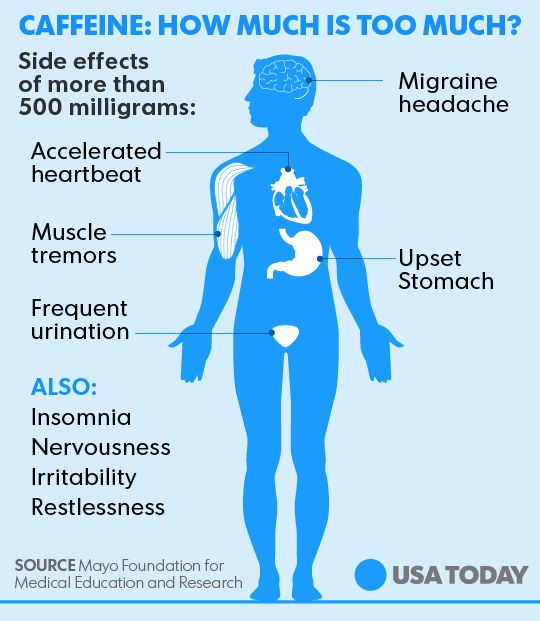
A stye is an inflammation of the oil gland. It is sometimes spelled “sty” and is also known as a hordeolum. A bacterial infection causes inflammation to occur.
In the majority of cases, styes get better within a week. However, other people may experience symptoms not healing and require further treatment.
This article will cover the symptoms of a stye, diagnosis, treatments and home remedies, risk factors, and possible complications.
Fast facts on styes
Here are some key points about styes. More detail and supporting information are in the main article.
- Styes can be painful but often heal without medical intervention.
- If a stye persists for more than a week or affects vision, a person should seek medical attention.
- Styes can be external or internal.
- Home remedies for styes include a warm compress and over-the-counter pain medication.
Was this helpful?
A person with a stye will have a painful red swelling on the eyelid, making the eye produce tears and become red. Often the lump looks like a boil or pimple.
Often the lump looks like a boil or pimple.
Styes very rarely affect both eyes simultaneously. An individual will generally have one stye in one eye. However, it is possible to have more than one stye in the same eye or one in each eye.
Other symptoms of a stye may include:
- tenderness
- crusting of the margins of the eyelids
- burning sensation
- itching of the eye
- blurry vision
- discharge of mucus from the eye
- light sensitivity
- tearing
- discomfort when blinking
- the feeling that there is an object in the eye
A person should speak with a doctor if:
- the stye persists for more than a week
- vision problems arise
- the swelling becomes particularly painful, bleeds, or spreads to other parts of the face
- the eyelid or eye becomes red
Most styes form on the outside of the eyelid and may turn yellow and release pus. Some styes do appear inside the eyelid, and an internal stye tends to be more painful.
There are two general categories of a stye:
External hordeolum
External styes emerge along the outer edge of the eyelid. They can become yellow, filled with pus, and painful when touched.
Infections in the following areas may cause external styes:
- Eyelash follicle: The small holes in the skin from which eyelashes grow.
- Sebaceous gland: This gland is attached to the eyelash follicle and produces sebum. Sebum helps lubricate the eyelash and stops it from drying out.
- Apocrine gland: This gland also helps prevent eyelashes from drying out. It is a sweat gland that empties into the eyelash follicle.
Internal hordeolum
The swelling develops inside the eyelid. Generally, an internal hordeolum is more painful than an external one. Doctors also refer to them as internal styes, and they most commonly occur due to an infection in the meibomian gland. These glands produce a secretion that makes up part of the film that covers the eye.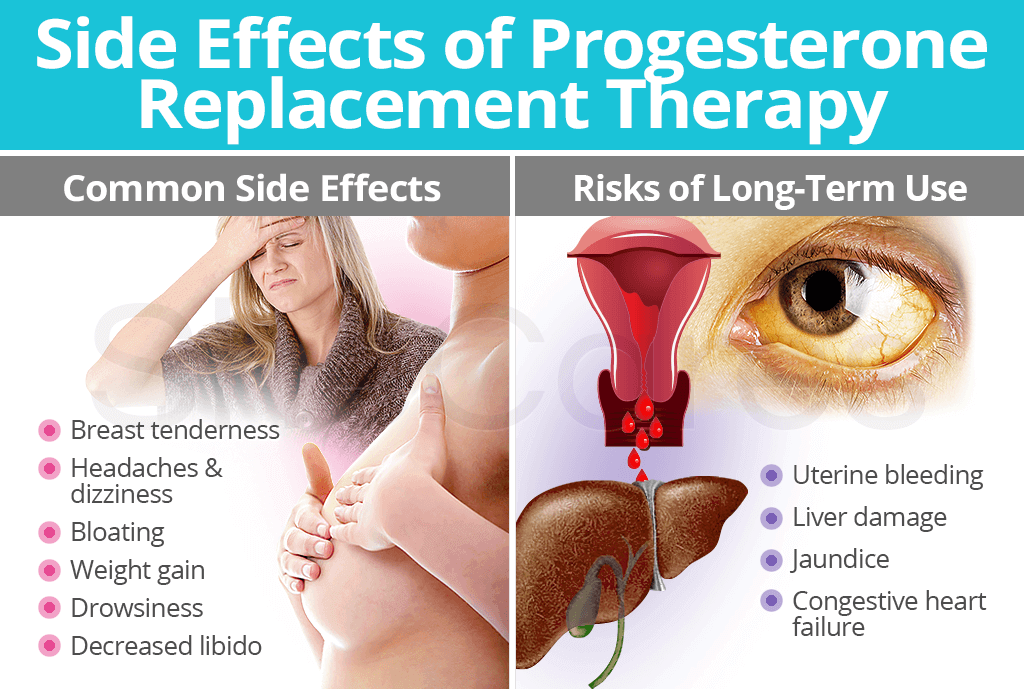
Patients may also experience a burning sensation in the eye, crusting of the eyelid margins, itchiness on the eyeball, sensitivity to light, tearing, a feeling that an object is in the eye, and discomfort when blinking.
Adolescents tend to have styes more commonly, but people of any age can develop them. The following can increase the risk of developing a stye:
- using cosmetics after their use-by dates
- not removing eye makeup before going to bed
- not disinfecting contact lenses before putting them in
- changing contact lenses without washing the hands thoroughly
- inadequate nutrition
- sleep deprivation
Although styes are not contagious, if a household member has a stye, the other residents should not share washcloths or face towels. Avoiding this type of contact minimizes the risk of cross-infection because there may be residual bacteria on the towels.
Sometimes a sty occurs as a complication of blepharitis, an inflammation of the eyelids./fatigue-caused-by-antidepressant-1067353-01-9847579d382b47288de7a7d2ec6b99d7.png)
A bacterial infection causes blepharitis, but it can also sometimes be a complication of rosacea, an inflammatory skin condition that mainly affects the skin of the face.
Most styes go away on their own without the need for any medical intervention. However, pain relievers may be helpful if the stye is particularly sore. It is best not to apply eye makeup, lotions, or wear contact lenses until the stye has completely gone.
Doctors also recommend the following home remedies and treatments:
Warm compress
Doctors recommend people not to burst a stye themselves but apply a warm compress.
A warm compress held gently against the eye may help ease symptoms and release pus more readily. The water should not be too hot. If applying the compress to someone else, a person should take special care to avoid it being too hot or applying too much pressure.
A person should hold the compress against the eye for 10–15 minutes, three or four times each day.
As soon as styes rupture, symptoms tend to improve rapidly.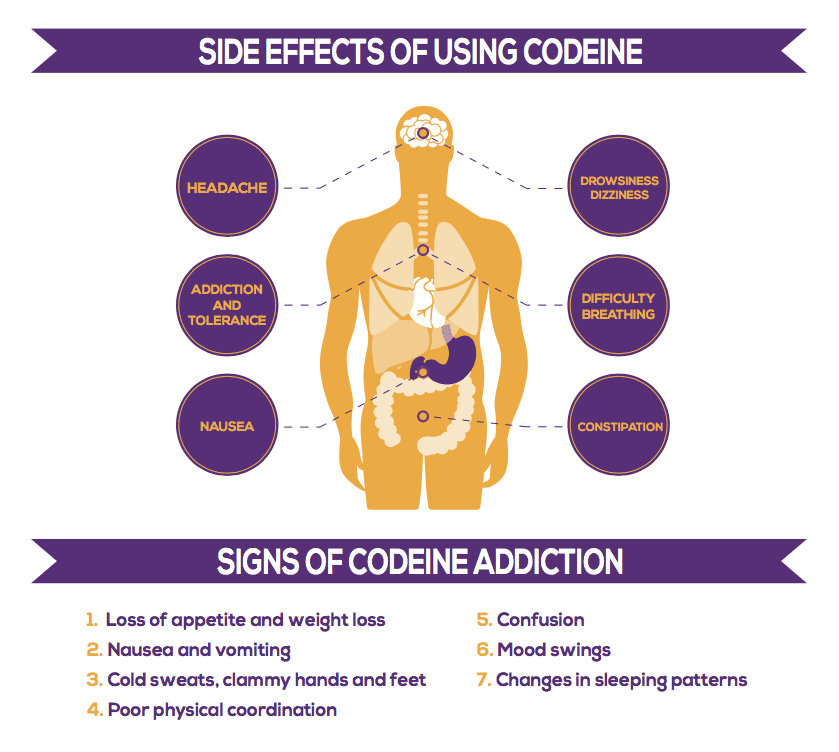 Not only does the compress ease the discomfort, but it may also encourage the pus to drain away.
Not only does the compress ease the discomfort, but it may also encourage the pus to drain away.
Antibiotics
If the stye persists, the doctor may prescribe a topical antibiotic cream or antibiotic eye drops. If the infection spreads beyond the eyelid, a medical professional may prescribe oral antibiotics.
Other treatments
When an external stye is extremely painful, the doctor may remove the eyelash nearest to it and drain the pus away by lancing it with a thin needle. This procedure should only be carried out by a professional. If things do not improve, a doctor may refer a person to a specialist, for example, an ophthalmologist.
Complications, although extremely rare, may sometimes occur, including:
Meibomian cyst
A meibomian cyst is a cyst of the small glands located in the eyelid. The glands discharge a lubricant called sebum in the edge of the eyelid. A persistent stye inside the eyelid can eventually develop into a meibomian cyst or chalazion, especially if it obstructs the gland.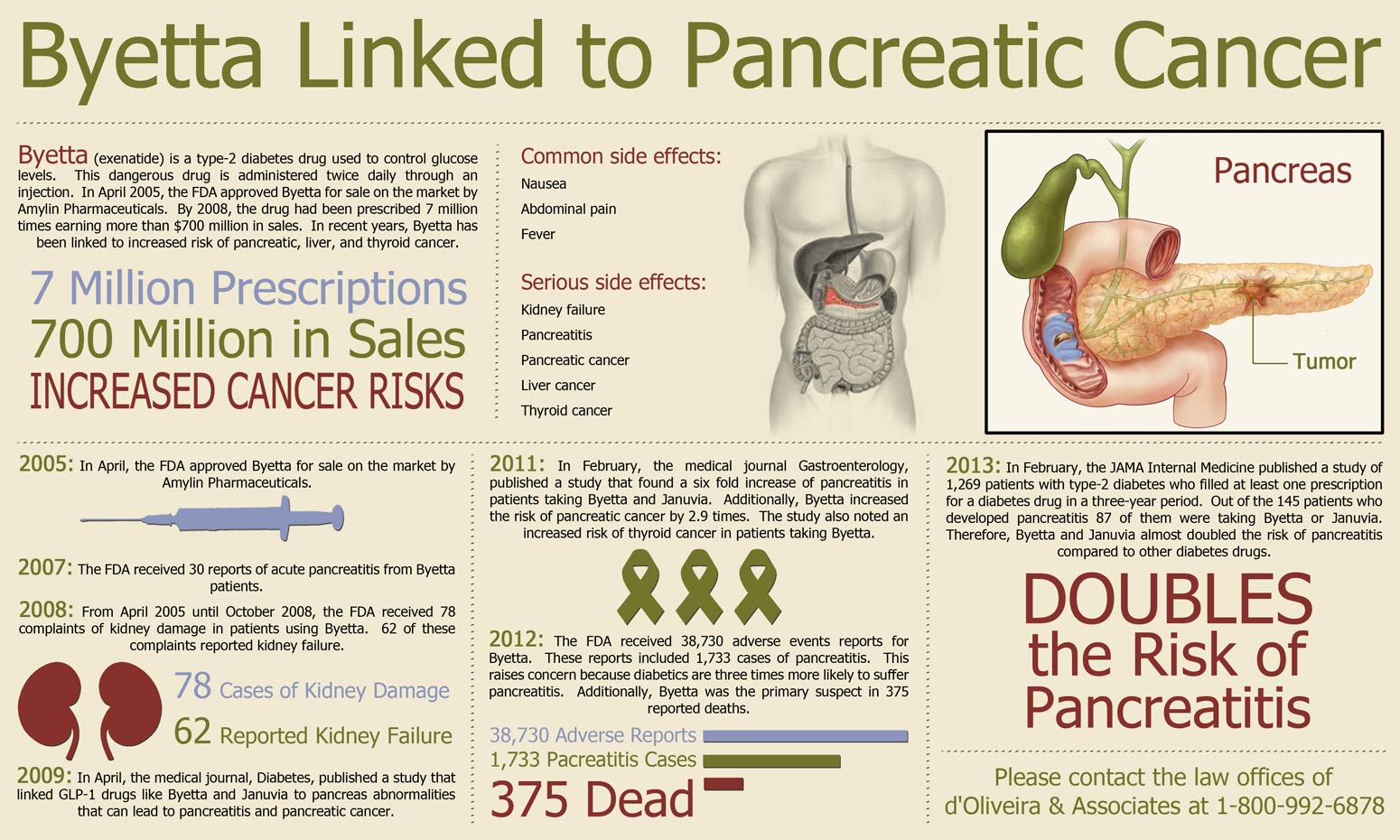 This type of cyst is easily and effectively treatable.
This type of cyst is easily and effectively treatable.
Preseptal or periorbital cellulitis
Cellulitis may develop if the infection spreads to the tissue around the eye. The layers of skin around the eye become inflamed, making the eyelids go red and swollen. Doctors treat this type of infection with antibiotics.
While these complications can occur, most cases of a stye will clear with minimal intervention.
Although uncomfortable and incredibly common, styes are not generally a cause for concern. Some complications are associated with styes, such as if the stye develops into a cyst or the infection spreads. However, doctors can treat both rare complications that may occur.
There are also certain factors associated with the risk of developing a stye, including lack of sleep or certain cosmetics.
Doctors suggest people with styes use home remedies to treat the inflammation but may prescribe antibiotics in cases where the stye persists.
Read the article in Spanish.
Barley Grass Side Effects – Blog
What is barley grass?
Barley is a grain. People often eat grain as food. Some people also use grain to make medicine.
Barley is most commonly used for heart disease and high cholesterol. It is also used for diabetes, obesity, cancer prevention, and other conditions, but there is no good scientific evidence to support these other uses.
In industry, barley is used as a food grain, natural sweetener, and as an ingredient in brewing and alcoholic beverages.
Organic Barley Grass Powder are pure natural products, not chemical preparations. It can strengthen the immunity of our normal cells, thus inhibiting the production of cancer cells, effectively blocking the transformation and deterioration of cancer cells. Therefore, organic barley grass powder not only does not damage normal cells, but can also enhance the protective and repair functions of normal cells.
Although barley grass is generally safe to consume for most people, there are a few side effects and precautions that you may want to consider.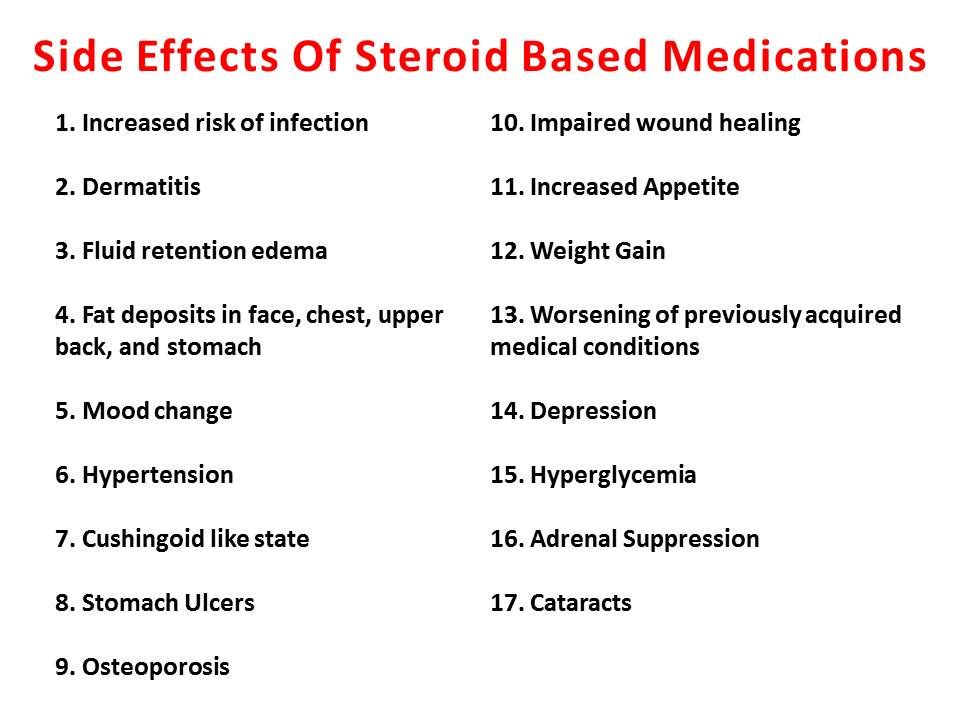 Food intake must be controlled in a certain amount. Some products may also have side effects. So what are the side effects of barley grass?
Food intake must be controlled in a certain amount. Some products may also have side effects. So what are the side effects of barley grass?
Barley Grass Powder Side effects
Although hypersensitivity to barley products is usually associated with the seeds and not the green leaves or shoots, patients with celiac disease or other sensitivity to barley should probably avoid the use of barley grass .
1. Adverse reactions.
When drinking organic barley grass powder, some people have found some problems with their adverse reactions. Organic barley grass powder is actually made from the natural plant barley, but side effects that can also be caused by some people’s physical causes. Barley is LIKELY SAFE for most people when taken by mouth. This can cause gas, bloating, or a feeling of fullness in some people. This usually decreases with continued use. Barley can also cause an allergic reaction in some people.
2. Low blood sugar.
In terms of acidity and alkalinity, barley grass powder is actually an alkaline food. There is some effect on blood sugar regulation, but some people have lower blood sugar levels, which can lead to low blood sugar levels.
3. Allergy.
Organic barley grass powder may also have an allergic reaction in people who are allergic to the body. If you have an allergic reaction while drinking Organic Barley Grass Powder, I hope I will be treated first. People with allergies should choose barley leaves carefully.
When applied to the skin: There is not enough reliable information to know if barley is safe. In some people, barley may cause an allergic reaction after it has been applied to the skin. Symptoms may include skin rash and difficulty breathing.
In addition, in patients with kidney stones, the oxalic acid contained in organic barley grass powder may become more severe. Babies under 2 months old, the baby is too small, the stomach needs to be improved, can not drink organic barley grass juice. Patients with uremia are not recommended to have. If the body is sick or under treatment, the diet should consult a doctor to determine if you can eat vegetables and fruits, you can drink organic barley grass powder juice.
Patients with uremia are not recommended to have. If the body is sick or under treatment, the diet should consult a doctor to determine if you can eat vegetables and fruits, you can drink organic barley grass powder juice.
Are there security issues?
Barley is LIKELY SAFE for most people when taken by mouth properly. Barley flour can sometimes trigger asthma.
Special precautions and warnings:
Pregnancy and breastfeeding: LIKELY SAFE barley when taken by mouth during pregnancy in amounts normally found in foods. However, barley sprouts are POSSIBLY UNSAFE and should not be eaten in large quantities during pregnancy.
There is not enough good information about the safety of taking barley if you are breastfeeding. Stay on the safe side and avoid being used.
Celiac disease or gluten sensitivity: The gluten in barley can make celiac disease worse. Avoid using barley.
Cereal Allergy: Consumption of barley may cause an allergic reaction in people who are sensitive to other grains, including rye, wheat, oatmeal, corn, and rice.
Diabetes: Barley may lower blood sugar levels. Your diabetes medications may need to be adjusted by your doctor.
Surgery: Barley may lower blood sugar levels. There is concern that this may interfere with blood sugar control during and after surgery. Stop using barley at least 2 weeks before your scheduled surgery.
What is the recommended dosage?
A dose of 15 g/day of dried barley leaf extract has been used to lower cholesterol levels.
Organic Barley Grass Powder has many effects but still side effects. I hope that when we choose barley, we can understand our body first and then eat it in moderation.
If you are looking to wholesale organic barley grass powder from one of the professional organic barley grass powder manufacturers and suppliers, please feel free to contact us at [email protected]
Links: https://www.webmd. com/vitamins/ai/ingredientmono-799/barley
https://www.healthline.com/nutrition/barley-grass
https://www. drugs.com/npc/barley-grass.html
drugs.com/npc/barley-grass.html
https http://www.emedicinehealth.com/barley/vitamins-supplements.htm
Effective treatment of barley in children: the best drugs
Contents
- 1 Medicines for barley in children: how to choose an effective remedy for treatment
- 1.1 Barley in children: causes of occurrence
9009 5 1.2 Symptoms of barley in children
- 1.3 Ways to treat barley in children
- 1.4 Treatment of barley in children with folk remedies
- 1.5 Effective treatment of barley in children: the best drugs
- 1.5.1 Eye drops for barley: which ones to choose
- 1.6 Use of antibiotics in the treatment of barley in children
- 1.7 Hormonal drugs in barley: effectiveness and contraindications
- 1.
 8 Vitamins and supplements: help in barley in children
8 Vitamins and supplements: help in barley in children - 1.9 Treatment of barley in children without use medicines
- 1.10 How prevent the reappearance of barley in children
- 1.11 When to see a doctor for barley in a child
- 1.12 Related videos:
- 1.13 Q&A:
- 1.13.0.1 What causes barley in a child?
- 1.13.0.2 What are the symptoms of barley in children?
- 1.13.0.3 Can stye be treated in children without medication?
- 1.13.0.4 What medicines are available to treat stye in children?
- 1.13.0.5 How long does it take to treat stye in children?
- 1.13.0.6 What precautions should be taken to prevent barley?
Find out which medications will help your child get rid of stye quickly and effectively. List of proven drugs and recommendations for use.
Styes in children is a common eye disease that can cause significant discomfort. Often, barley occurs in children due to malnutrition, a reduced immune system, and insufficient eye hygiene. However, to cope with this disease can be quite simple and effective.
However, to cope with this disease can be quite simple and effective.
The use of the correct preparations is the main factor in the effective treatment of barley. There are many pharmacological agents that can quickly and painlessly relieve a child of unpleasant symptoms. However, not all of them are equally effective and safe for young patients.
In this article we will look at the best and most effective drugs for the treatment of barley in children. Their features, advantages and disadvantages will be considered, as well as how to apply them correctly in order to achieve maximum effect with minimal adverse reactions. Ultimately, you will learn how to choose the most appropriate drug for your child and deal with stye quickly and effectively.
Styes in children: causes of appearance
Styes is a purulent inflammation of the hair follicle in the eyelash area. It can occur in children of any age, but adolescents and children of primary school age are most often affected.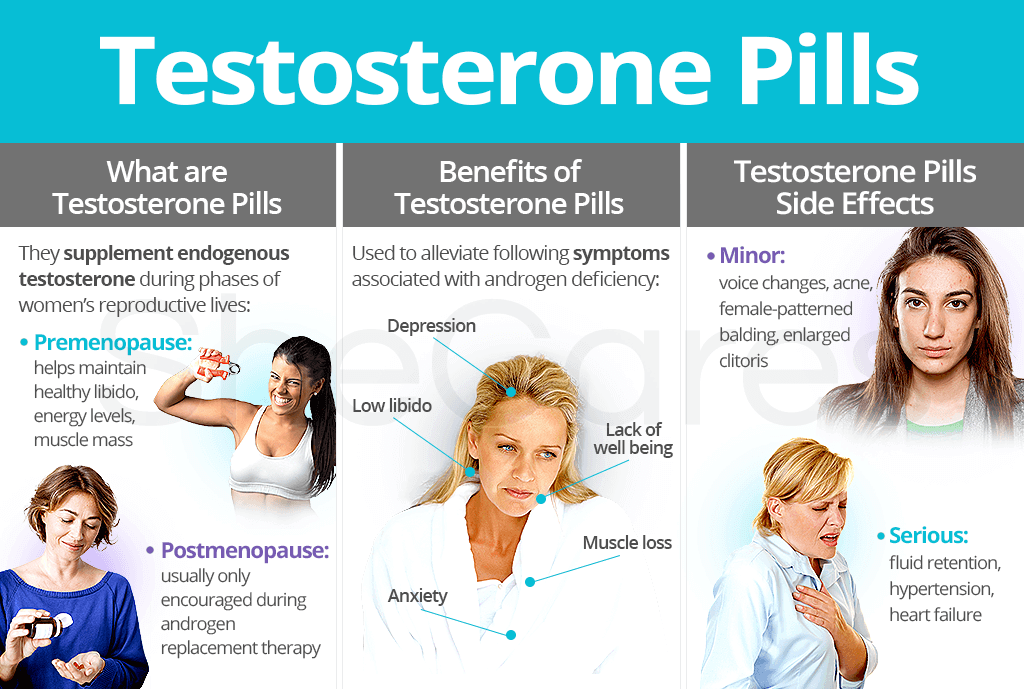 The main cause of barley in children is infection with Staphylococcus aureus, which enters the sac through microtrauma or cuts on the skin.
The main cause of barley in children is infection with Staphylococcus aureus, which enters the sac through microtrauma or cuts on the skin.
Please note that if a child often suffers from barley, this may be a sign of hidden ailments, and in this case, a pediatrician should be consulted.
Symptoms of barley in children
Barley in children is a disease that manifests itself as an inflammatory infection of the eyelid. Depending on the level of infection, the child may have the following symptoms:
- Swelling of the eyelid. The eye can swell significantly, which affects not only the appearance, but also visual function.
- Severe itching and pain. Most often, children complain of itching and pain at the site of inflammation. They belong to the category of “unbearable” and can greatly complicate the life of a small patient.
- Redness of the eye. In the process of infection, the small vessels dilate and the redness of the eye becomes pronounced.

- Appearance of purulent blisters on the eyelids. One of the obvious symptoms of barley is the appearance of purulent blisters on the child’s eyelids. They are located next to the eyelashes and resemble a rash.
- Increased sensitivity of the eyes to light. Some children with stye have an increased sensitivity of the eyes to light. This is another discomfort for the child.
Ways to treat barley in children
Barley is an infectious disease that manifests itself as an inflammation of the ciliary sac on the eye. Barley usually appears in children aged 5 to 12 years. Treatment is possible in different ways, depending on the degree of development of barley.
Short stye. If the stye is in its early stages and does not exceed 5 mm, then the best treatment is to apply a full-time antibiotic ointment to the affected area. The ointment should be used 3-4 times a day.
Long lasting stye. If the stye continues to develop and does not improve within 2-3 days, warm compresses are applied, antibiotic ointments are applied to the affected area and eye drops are used. If the drops do not help, then a visit to the doctor may be inevitable.
If the stye continues to develop and does not improve within 2-3 days, warm compresses are applied, antibiotic ointments are applied to the affected area and eye drops are used. If the drops do not help, then a visit to the doctor may be inevitable.
Deterioration. If the child’s condition worsens, it is best to consult a doctor immediately. The doctor will conduct certain studies and identify the severity of the disease. Keep in mind that styes left untreated can lead to complications such as becoming chronic and spreading the infection to other parts of the eye.
Treatment of barley in children with folk remedies
Barley is a common disease in children, which can lead to quite serious consequences. However, traditional medicine offers various treatments for barley that can help relieve symptoms and speed up recovery.
The use of folk compresses. The best known are compresses based on vegetable oils such as olive, vegetable or linseed oil. A potato compress can also be used, for which you need to grate a potato and apply it to a sore spot.
A potato compress can also be used, for which you need to grate a potato and apply it to a sore spot.
Use of infusions and decoctions. The use of infusions and decoctions based on herbs and plant components can also help in the treatment of barley. One of the most effective is an infusion of chamomile, which must be brewed in boiling water and left for 15-20 minutes.
- Another effective decoction can be prepared from Kalanchoe leaves. To do this, insist 2 sheets of Kalanchoe in 100 ml of boiling water for 2-3 hours.
- You can also use honey compresses based on natural honey and soda. Natural honey will not only speed up healing, but also help eliminate inflammation.
Use of cleaning agents. To clean the paranasal sinuses, special inhalations based on soda and salt can be used. To do this, dissolve half a teaspoon of salt and soda in a glass of warm water and inhale the vapor for 10 minutes.
Effective treatment of barley in children: the best drugs
Eye drops for barley: which one to choose
Barley is an unpleasant disease that primarily manifests itself in the form of discomfort in the eyes. It causes redness, swelling and soreness around the eye and on the eyelid. One of the most effective ways to treat stye in children is through the use of eye drops.
It causes redness, swelling and soreness around the eye and on the eyelid. One of the most effective ways to treat stye in children is through the use of eye drops.
Among the best eye drops for barley are Tobrex, Furazolidone, Ciprofloxacin, Levomycetin, Okomistin, Sofradex. They differ in their action and composition, so drops should be chosen depending on the specific case. It is also necessary to take into account the age and characteristics of the child.
It is important to understand that stye eye drops are not the only treatment. Together with them, it is recommended to use anti-inflammatory drugs in the form of hot compresses and ointments to treat damaged eyelids. Complex therapy will help to quickly get rid of an unpleasant disease and avoid its reappearance.
Use of antibiotics in the treatment of barley in children
Antibiotics are one of the main drugs that perform the function of treating barley in children. However, it should be borne in mind that they are active only against bacteria, and they are meaningless in case of a viral infection of barley.
It is possible to determine what type of infection caused barley only after a full examination of the child’s eye and finding out the source of the infection (for example, proximity to a sick person). The main symptom indicating a bacterial infection is the presence of a purulent opening inside the eyelid.
If there are obvious signs of infection in children, it is necessary to see a doctor who will diagnose and determine what kind of antibiotics are needed. Self-treatment in this case is unnecessary and can lead to insufficient effectiveness of treatment, as well as the appearance of side effects, such as allergic reactions in a child, etc.
In addition to antibiotics, topical drug treatments, and supportive procedures, such as indoors, sterilize all reused items.
Hormonal preparations for barley: effectiveness and contraindications
Hormonal preparations for barley are one of the most effective methods of treatment. They are able to reduce the healing time and alleviate the patient’s condition. Hormones reduce the inflammatory process, reduce swelling and itching, and relieve pain.
Hormones reduce the inflammatory process, reduce swelling and itching, and relieve pain.
However, the use of hormonal drugs in barley has contraindications. Among them: individual intolerance to the components of the drug, systemic diseases, disorders in the cardiovascular system, ocular hypertension and other health problems. Hormonal preparations are not recommended for use without a doctor’s prescription.
Among the most popular hormonal drugs for barley are hydrocortisone ointment, prednisone and dexamethasone. However, for each specific case in children, an individual drug can be prescribed, taking into account the age category, the severity of the disease and the presence of concomitant diseases.
Hormonal preparations should be taken as directed by the attending physician, strictly following dosage recommendations. If used incorrectly, a number of negative consequences can occur, such as: disturbances in the immune system, metabolic disorders, visual impairment.
Vitamins and supplements: help with stye in children
Barley in children is a common disease that is most often caused by a bacterial infection. However, weak immunity in children can also contribute to the development of stye. Proper treatment and care will help avoid complications and speed up recovery.
In addition, vitamins and supplements can help a child’s body fight bacterial infection and speed up the healing of styes. Vitamin C, found in fruits and vegetables, for example, helps boost the immune system. Vitamin B12 contributes to the proper functioning of the nervous system and improves blood circulation, which also helps the healing of barley.
- Iron. If a child’s stye is caused by anemia, iron supplements may be given to quickly restore hemoglobin levels in the blood.
- Probiotics. Probiotic supplements can help improve digestion as well as support the gut microflora, which is beneficial for children’s health.
- Herbs and herbal supplements.
 Some herbs, such as black tea and green tea, have anti-inflammatory properties and can help reduce stye inflammation. However, you should always consult your doctor before using this supplement.
Some herbs, such as black tea and green tea, have anti-inflammatory properties and can help reduce stye inflammation. However, you should always consult your doctor before using this supplement.
In addition to vitamins and supplements, it is important to take good care of your child’s eyes. Regular use of hot compresses and massage helps to reduce the infection process.
Treatment of barley in children without medication
Treatment of sty in children is a very common problem, but it does not always require medication. In some cases, you can do without them.
Proper nutrition can also help your child get rid of stye faster. Make sure your children have enough fruits, vegetables, and protein in their diet. This will help strengthen the immune system and speed up the healing process.
Also, make sure that your child maintains good personal hygiene. He should wash his hands regularly and avoid touching the infected eye with his hands. This will help prevent the spread of infection and speed up the healing process.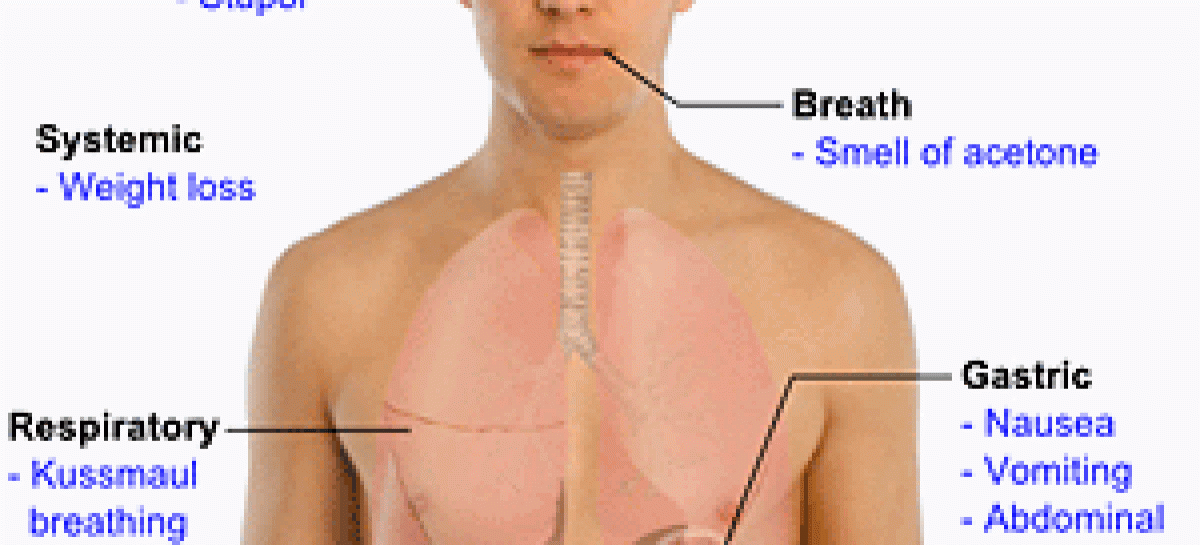
How to prevent the recurrence of stye in children
1. Practice good hygiene
To prevent the recurrence of stye in children, it is necessary to teach him proper hygiene habits. After receiving barley, the child should only separate their personal belongings and wash their hands regularly with soap and water. In addition, you should not touch your eyes with dirty hands and wear contact lenses during illness.
2. Support your child’s immune system
A strong immune system is the basis of health and prevents a number of diseases, including stye. To maintain immunity in a child, it is necessary to monitor nutrition, ensure adequate sleep and carry out daily exercises.
3. Treat any infections promptly
Infections, such as SARS or the flu, can lower the immune system and cause stye in a child. Therefore, in order to prevent a recurrence, it is necessary to treat any infections that may be in the child’s body in a timely manner.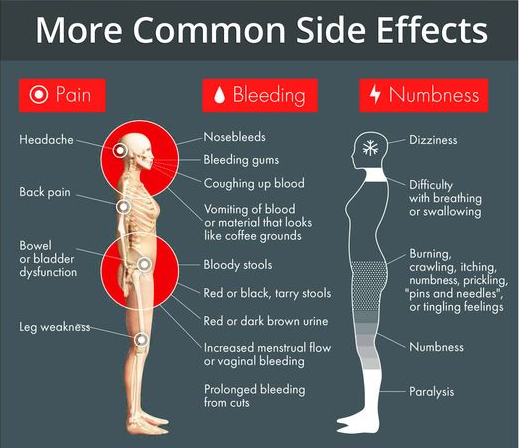
It is important to remember that in case of recurrence of barley in a child, it is necessary to consult a doctor in order to find the most effective method of treatment and avoid possible complications.
When to see a doctor for styes in a child
Styes in children is a common disease that causes inflammation at the edge of the eyelid. While this is usually not serious and resolves quickly, medical intervention is sometimes required.
If your child has stye and you see the following symptoms, see a doctor:
- High body temperature
- Severe pain around the eye
- Styes located inside the eyelid
- Styes that last more than two weeks
- If the child has at least one stye that causes visual impairment
- other chronic diseases
If the child has had a history of inflammatory diseases in the eye or eyelids, then he should be examined by a doctor to determine the cause of the disease and preventive treatment.
Related videos:
Q&A:
What are the causes of stye in a child?
Styes in children are most often caused by a bacterial infection that enters the hair follicle sac. This can happen due to non-compliance with personal hygiene rules, contact with infected people, use of non-sterile hygiene products.
What are the symptoms of barley in children?
Among the symptoms of barley in children: redness and swelling of the eyelid, pain when touched, itching, watery eyes, fever, general weakness.
Is it possible to treat stye in children without medication?
Yes, stye can be treated without medication. To do this, you need to follow the rules of hygiene, treat the diseased area with an antiseptic, apply warm compresses. However, if self-medication does not lead to positive results, you should consult a doctor.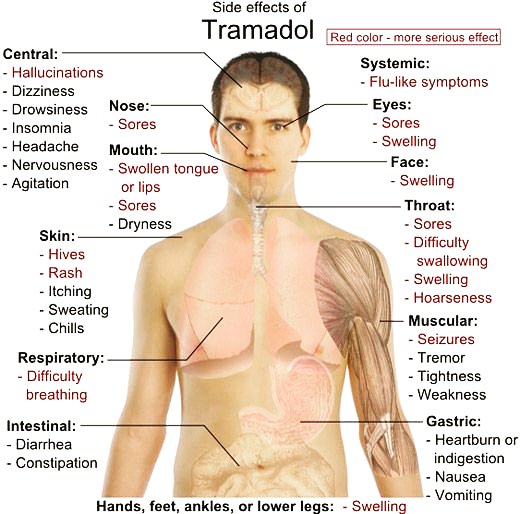

 8 Vitamins and supplements: help in barley in children
8 Vitamins and supplements: help in barley in children
 Some herbs, such as black tea and green tea, have anti-inflammatory properties and can help reduce stye inflammation. However, you should always consult your doctor before using this supplement.
Some herbs, such as black tea and green tea, have anti-inflammatory properties and can help reduce stye inflammation. However, you should always consult your doctor before using this supplement.